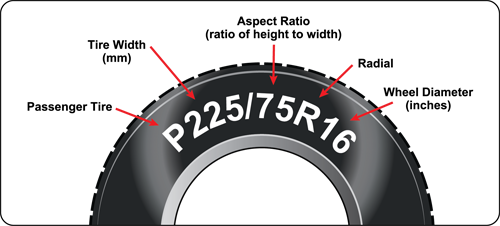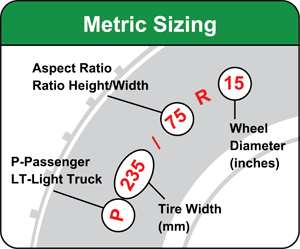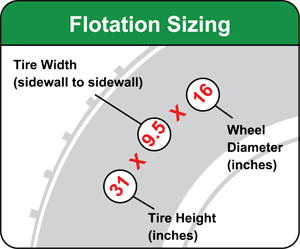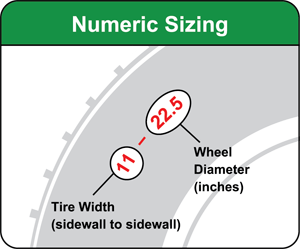How to Find & Understand Tire Sizes
Pro Tip: Finding and understanding your tire size is easier than you might think.
Rule #1: Tire sizes are NOT vehicle make/model specific.
Your tire size can be found on the sidewall of your tire, and it will look similar to the illustration.

Don't just look at your owner's manual to determine your tire size; look at the actual tire on your vehicle. If the OEM tires and wheels on your vehicle have been changed, your owner's manual may not accurately reflect the tire size that is actually installed on your vehicle. If you have any questions regarding tire sizes, please call us at (503) 678-2359.
Once you’ve located your tire size, understanding what it all means comes next.
Pro Tip: There are three different types of tire sizes: Metric, Flotation & Numeric.
Metric Sizing

The most common type of tire size is metric. Metric sizing is represented with three sets of numbers as shown in the illustration (left), and can have letters such as “P” for passenger, “LT” for light truck, and/or “R” for radial.
Examples: 235/75-15, P235/75-15, 235/75R15, LT235/75R15
The first number is the width of the tire in millimeters. This is measured from sidewall to sidewall, NOT by the tread width.
The second number, which is called the “aspect ratio”, represents the height of the sidewall from the rim to the top of the tread. The aspect ratio is found by measuring from the wheel rim to the top of the tread. This number is a percentage of the tire width. For example, if your tire size is 235/75-15, then the height of your sidewall is equal to 75% of the width of your tire.
The third number is the diameter of your wheel in inches. The tire size in our example has a wheel diameter of 15”.
Flotation Sizing

Flotation sizing is commonly used on trailers, tractors, small utility vehicles, and ATVs. They typically have a wider overall width than metric and numeric sized tires and require wider wheel widths.
Examples: 31X9.5X16, 20X10X9, 26X8X12
All of the measurements for this tire size type are in inches.
The first number is the height of the tire from top to bottom measured from the ground to the top center of the tire.
The second number is the width of the tire from sidewall to sidewall, NOT the tread width.
The third number is the wheel diameter. The tire size in our example has a wheel diameter of 16".
Numeric Sizing

Numeric sizing is commonly used in light truck, SUV, commercial truck, and agricultural applications. Numeric sizes will have either two or three sets of numbers.
Examples: 11-22.5, 8-19.5, 35X12.50-17
In the examples above, the first number is the tire width in inches, measured from sidewall to sidewall, NOT tread width.
The second number is the wheel diameter in inches.
If your tire size has three sets of numbers, the first number represents the tires height, the second number is width, and the third number is the wheel diameter in inches. The tire size in our example has a wheel diameter of 22.5".
